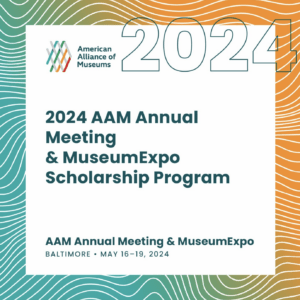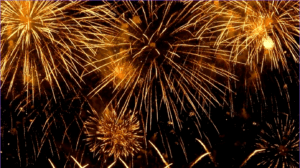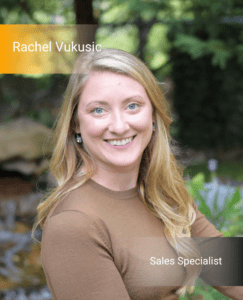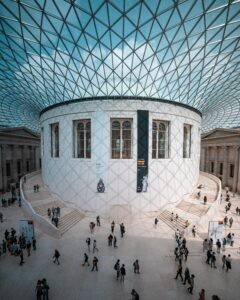A few weeks ago we sat down with Annette, Director of the Texas Fashion Collection at the University of North Texas in Denton, Texas. We discussed the Texas Fashion’s unique institutional context, how TFC interacts within the fashion space, and the integral role MuseumPlus played in TFC growing their impact globally.
————————–
zetcom: It’s so nice to meet you, Annette. I really appreciate you taking the time to talk to me about all things Texas Fashion Collection and zetcom! Tell me, what zetcom product does TFC use and how did you stumble across zetcom?
Annette: So we used Museum Plus in another institution I used to work at; they used Museum Plus and Emuseum Plus, so I’m familiar with both of them. I think I was first exposed to Museum Plus maybe in like 2008.
Z: Annette, tell me more about you and your role at the University of North Texas.
A: I am the director of the Texas Fashion Collection, which is housed within the College of Visual Arts and Design which is housed within the University of North Texas. Unlike many other collections, we don’t function within a museum and an archive. This unique situation has benefits and limitations, particularly lending a design focus to our work but also positioning as apart from, say, our archivist colleagues in the university libraries.
But honestly, the way we are uniquely situated has made MuseumPlus the perfect product for us, as we need to document our collection holdings and track our programming in one streamlined location.
For a little bit more context, for the first six years of my work as director, I was the only permanent full-time person assigned to run a collection of about 20,000 historic and designer garments and accessories. I’m trained as an art historian and art educator, and most of my collection management knowledge has been developed through on-the-job training and through some colleagues in the university library here. My job covered everything from sweeping the floors to fundraising, to curating exhibitions in museums around the state to, creating programming for everyone from experienced quilters to 12 year-olds who aspire to become fashion designers.
I feel really lucky that six months ago our collection manager was hired. She has a background in art history and in library science and information science. She and I both use the database a lot and, because of this increased staffing, we’re adapting and adjusting how we use MuseumPlus.
Z: Now that you have somebody helping you with collections, what does your day-to-day look like?
A: Our collection manager now manages most of our internal operations and my work is focused externally, though our foundation in collections keeps both of us involved in most aspects of the TFC’s work. For example, I work with other institutions to negotiate loans and travelling exhibitions; I then hand off that paperwork to her, and she completes condition reports and packs artifacts.
As an arts educator, I am passionate about creating collections-based programming, and we needed a program to track all our engagement with tours, lectures, and research appointments. Through MuseumPlus, we create event records and link them with records for the objects we share during programs. Our institutional record keeping has never been better!
A lot of our collection manager’s work is managing the digitization project, which is mainly executed by part-time temporary student staff who are incredibly talented. Digitization was the main reason that we decided to upgrade from our older proprietary system to Museum Plus. The older program had limited functionality, and when we started digitizing our collection, we needed a way to manage those new digital assets.
Z: What is the main purpose of the Texas Fashion Collection? Because, and don’t take offense to what I’m about to say, but when you think about fashion you don’t think about North Texas or Texas really.
A: The Dallas area has so much culture that I don’t think the rest of America thinks about, you know? For example, Nieman Marcus started in Dallas and introduced high fashion to this part of the country. The impact Nieman Marcus has had in fashion and retail, is huge, and as the founder of our collection we owe them a debt of gratitude too.
Our collection represents more than just Neiman’s history, though. In MuseumPlus, our records document artifacts worn by Audrey Hepburn, designed by local seamstresses like Lilli Wolff, and even a few pieces that the designer is listed as “grandma”! I think it’s important for people to see artifacts that represent histories like their own as well as histories that are less familiar. Those varying artifacts provide perspective – and that’s something the Texas Fashion Collection prides itself on.
Z: Definitely. What has the museum been doing to combat that image that the rest of America, and the world, may have with Texas?
A: TFC doesn’t have an exhibition space of its own, so our works are often on exhibit elsewhere. For example, we’ve showcased our holdings in art galleries, history museums, and even shopping malls! We’re currently working with a university gallery in Boston to showcase some of our garment and accessories.
This is where MuseumPlus is incredibly helpful, as we can generate reports with photographs and information communicate information about our holdings to borrowing institutions. Before MuseumPlus they’d have make a trip to Denton to view artifacts in person, and we’d spend hours – days even – working to come up with the final artifact checklist. Then we would have to manually create the templates for loan documents and condition reports.
Now, with MuseumPlus, it’s all digitalized and tracked – the condition it was in when it left, where it currently is, in what container the garment is in. It’s really pretty cool.
Z: I feel like no one, outside of the industry, understands the work that goes behind exhibits we see at museums. And that, in order to fundraise, you need attention and marketing but in order to get that attention you need to do the very unsexy task of data management.
A: Funny you mention that. When I was first brought onto the team here at TFC, I knew we needed a collections management software to propel the entire collection forward and really make an impact. And one day I gave a gentleman a behind-the-scenes tour of our facilities. He asked me what we needed, I told him a new database system, and he offered to fund it! Little did I know, he had served as the interim director of a small museum, understood the challenges of day-to-day operations. It was incredible and continues to impact our daily work!
Z: That’s incredible. Now, beyond like all of these exhibits, what are you looking forward to in the next six months, personally?
A: As a lifelong learner, I’m currently working on a PhD in History at UNT. I recently finished my comprehensive exams and am looking forward to digging into dissertation research that relates to the TFC’s holdings. That work will bring a new depth to my ability to interpret our artifacts and help lay a foundation of knowledge for the future.
Other than that, the continuation of the digitization of our collection will only grow our ability to connect others with our holdings. A lot is happening that’s going to set TFC up for great things in the future!
————————————
We’d like to thank Annette from Texas Fashion Collection for her time and sharing more about her experience with MuseumPlus. To learn more about TFC and what they’re up to, check out their website here and their Instagram.








